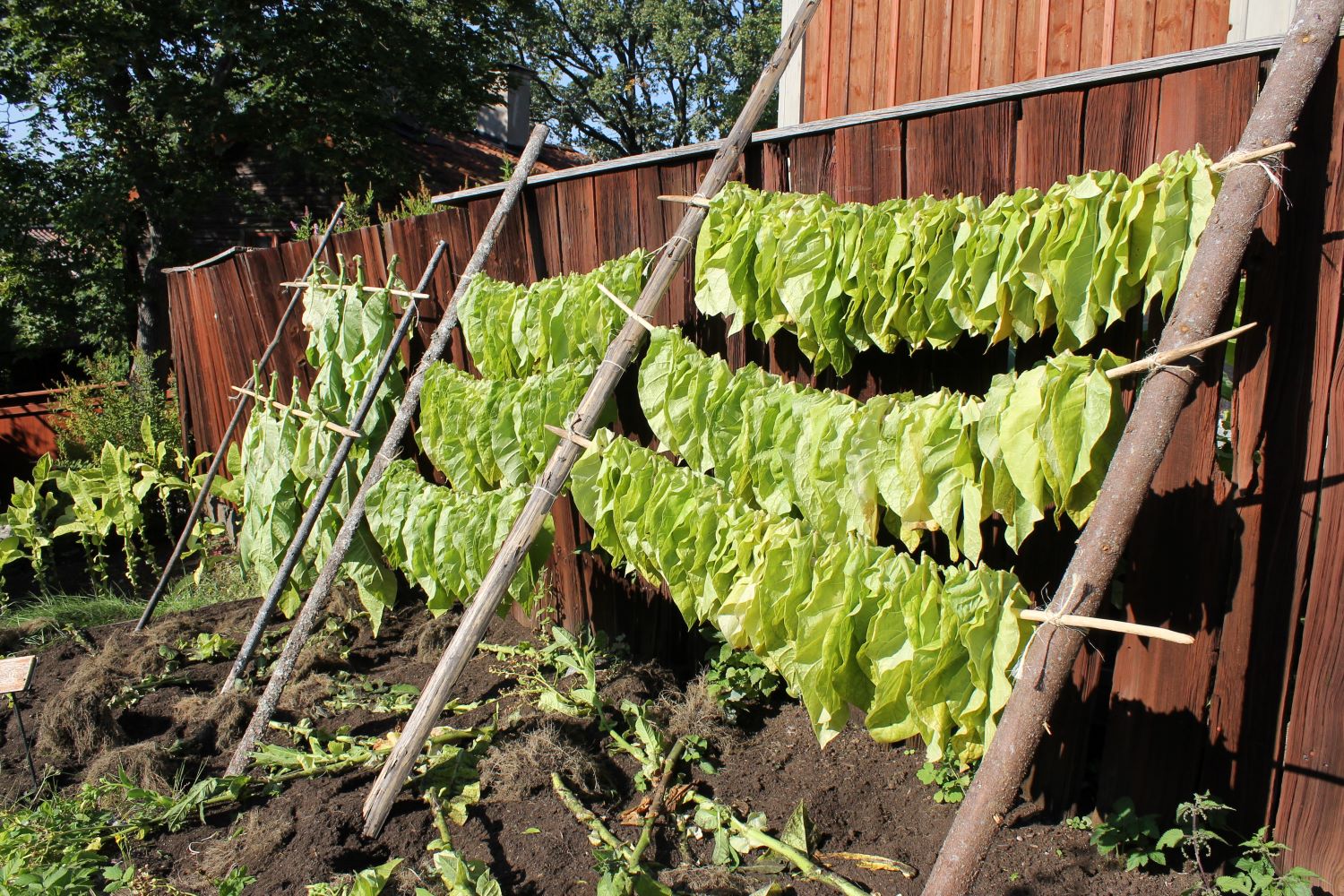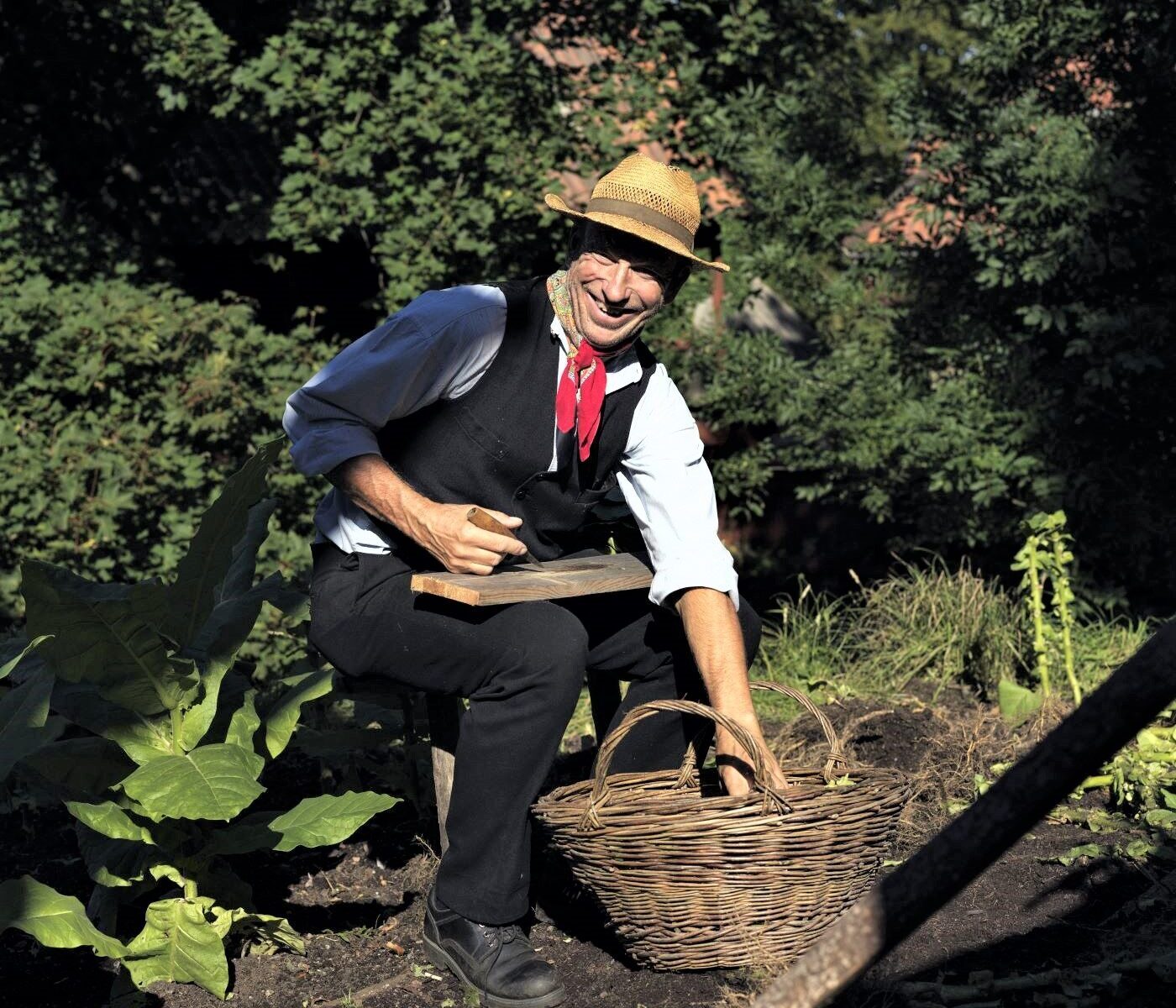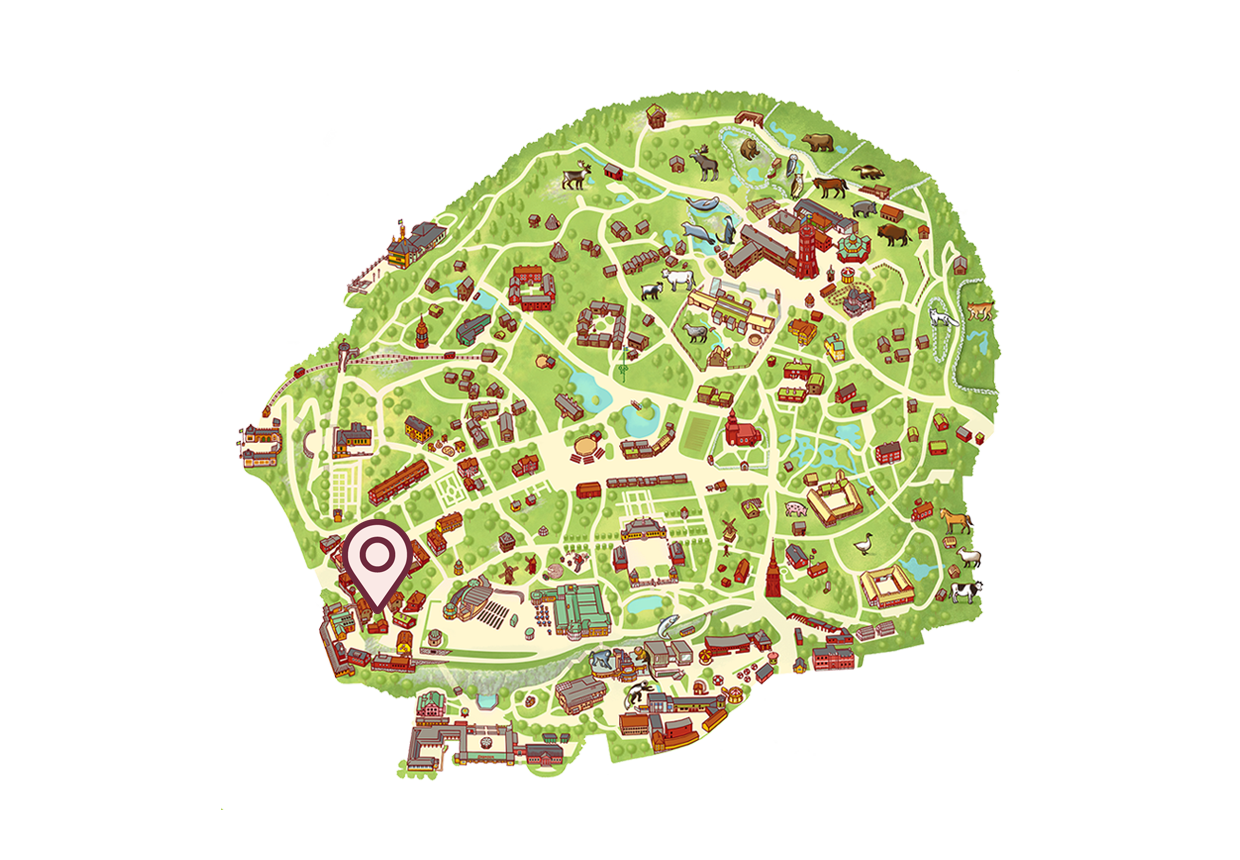- See and do
- Open air museum
- Gardens
- Tobacco growing
Tobacco growing
Aztec tobacco and cultivated tobacco are grown at Skansen. Both species are annuals, and were used for tobacco production which was once widespread in Sweden. They are pre-cultivated indoors during the spring, planted outdoors in May and usually harvested in August.
-
The tobacco plant has very small seeds, with 10,000 seeds weighing around 1 gram. Aztec tobacco, Nicotiana rustica, grows to a height of about one metre and has small yellow flowers on the stem and large sticky, pungent leaves. Cultivated tobacco, Nicotiana tabacum, grows up to two metres high and has large pale pink flowers that grow directly from the stem.
The tobacco is grown at Gubbhyllan and in the Old Town Quarter at the Cobbler’s Farmstead and the Tannery Farmstead. Alida tobacco, which was developed by the legendary tobacco grower Alida Olsson, is grown at the Tannery Farmstead using seeds from her last crop in 1964.
For more information about Swedish tobacco growing and production, see the Snus and Match Museum’s website.
The history of tobacco in Sweden
In the early 18th century, Sweden was a poor country following many wars. In 1724, King Frederik I issued a decree calling for tobacco to be grown throughout the country. The aim was to make Sweden self-sufficient within four years by reducing imports of luxury goods and strengthening domestic industry.
-

Tobacco at Skansen
-
Initially, the greatest impact of tobacco growing was felt in the cities. Many gardens and backyards were used as ‘tobacco meadows’, such as those in Skansen’s Old Town Quarter. In 1760 tobacco was grown in 72 Swedish towns, and by 1764 tobacco growing was Sweden’s third largest industry. Growing tobacco turned out to be a profitable business.
Tobacco growing was largely women’s work, often passed down from mother to daughter. The large growers in Stockholm employed women on a seasonal basis, who travelled from Småland and Dalarna to work on the tobacco plots. This was gruelling, demanding work, involving long shifts, and was done by hand. After the plants had been planted out in the spring, they were cut, pinched out and topped before harvesting in August. The leaves were then hung on sticks to dry in special airy tobacco barns, or in attics and outbuildings. It was not until September that the tobacco would be dry enough to be taken down, bundled and transported to the factories.
During the latter part of the 18th century, more and more tobacco growing moved to the countryside. In the second half of the 19th century, tobacco growing ceased in most cities. By the 19th century, most of the Swedish tobacco harvest was used to make snus, a moist form of snuff.
-

Tobacco harvest
-
Overproduction and competition eventually caused prices to fall, and many growers switched to other crops. Tobacco growing survives in those areas with the best climatic conditions, such as Skåne, the Västgöta and Östgöta plains, Mälardalen and Stockholm. As recently as the 1890s, 300 tonnes of tobacco were harvested in Stockholm alone.
The introduction of the tobacco monopoly 1915 brought renewed interest in domestic production, but this quickly faded away as competition from abroad grew. Tobacco growing in Stockholm ceased in 1939, and the last crop of Swedish tobacco grown for commercial use was harvested in Åhus in 1964. Of Stockholm’s many tobacco barns, only one remains today: the barn at Cedersdals Malmgård on Sveaplan at the end of Sveavägen.
-
Buy tobacco plants
If you are interested in growing your own tobacco, tobacco plants are sold at Skansen’s the Lodge shop on Bollnäs Square.
Find Tobacco growing

